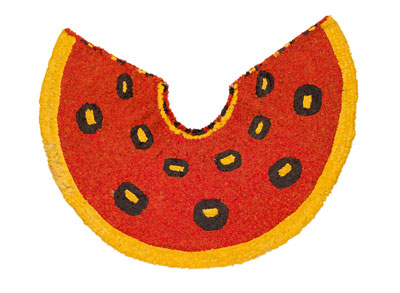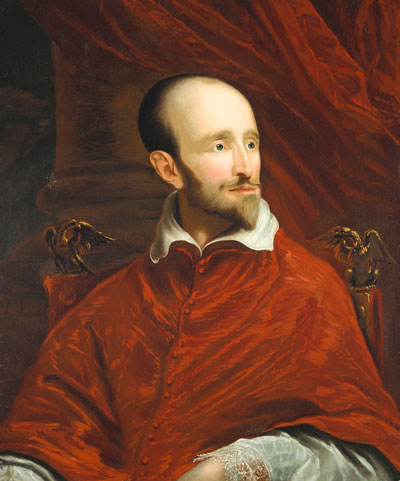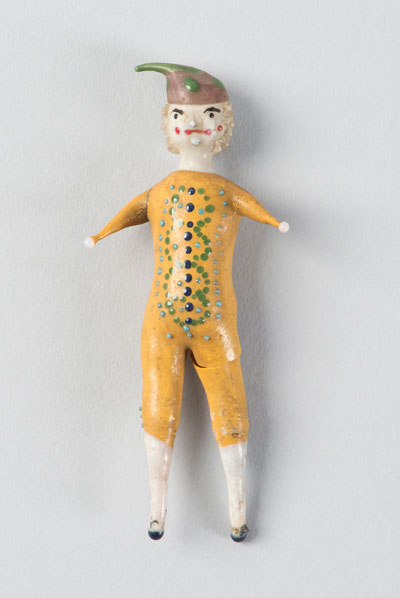Transatlantic connections - Hunterian exhibition brings Harvard’s historic treasures to Glasgow
A major new exhibition at The Hunterian, University of Glasgow, has brought rare items from Harvard University’s extraordinary collections to Scotland for the first time.
The Philosophy Chamber: Art and Science in Harvard’s Teaching Cabinet, 1766-1820, organised by the Harvard Art Museums, is now open at the Hunterian Art Gallery and celebrates the connections between the two universities over two and a half centuries.
Located in Cambridge, Massachusetts, USA, Harvard is one of the world’s most distinguished and best-known universities. The Philosophy Chamber reunites exceptional works of art and artefacts from its collections, many of which have not been on show for nearly two hundred years. The exhibition places them in the context of objects used and collected at the same time on the other side of the Atlantic, at the University of Glasgow.
The Philosophy Chamber offers a unique opportunity to see treasures which have played a vital role in teaching and research at these global institutions of learning.
 The show takes its name from Harvard’s ‘Philosophy Chamber’ - a grand room at Harvard College that, between 1766 and 1820, was home to more than one thousand artefacts, natural specimens and works of art from around the globe.
The show takes its name from Harvard’s ‘Philosophy Chamber’ - a grand room at Harvard College that, between 1766 and 1820, was home to more than one thousand artefacts, natural specimens and works of art from around the globe.
Taking its name from the academic discipline of natural philosophy, the Philosophy Chamber served as a lecture hall, experimental laboratory and picture gallery. The room was frequented by an array of artists, scientists, travellers and revolutionaries and its collections stood at the centre of artistic and intellectual life at Harvard and the New England region for more than 50 years.
The chamber was established in the years before the American Revolution and the exhibition explores aspects of this transformative period in transatlantic history, questioning the importance of scientific enquiry and debate in the context of the relationship between the new republic and Britain.
 Over 100 items will be on show at The Hunterian including paintings, prints, rare books, exotic artefacts from pioneering exploration, early Native American objects and scientific instruments. A canvas by John Smibert, the Scottish born painter who worked in Boston from 1730 to 1751 underlines transatlantic intellectual and cultural exchanges at this time.
Over 100 items will be on show at The Hunterian including paintings, prints, rare books, exotic artefacts from pioneering exploration, early Native American objects and scientific instruments. A canvas by John Smibert, the Scottish born painter who worked in Boston from 1730 to 1751 underlines transatlantic intellectual and cultural exchanges at this time.
Highlights from Harvard include: an exceptional example of Native Hawaiian feather work; Stephen Sewall’s mural-sized copy of the Wampanoag inscription on the landmark known as Dighton Rock, an 11-foot boulder located in Berkley, Massachusetts; and full length portraits by 18th century American artist John Singleton Copley. Glasgow highlights include: a reflecting telescope produced around 1760; an Inuit female cagoul from the Davis Straits; and an Inuit paddle donated by a captain from the Glasgow Whale Fishing Company.
The items are displayed in thematic sections dealing with exploration, teaching, ancient European and Native American civilizations and slavery - one of the more challenging and unsettling aspects of the period, reflecting the scholarship and sentiment of the times. The chamber was also a setting for discussions about the legality of slavery and included objects from merchants and Harvard alumni who profited from the slave trade.
 On show are four paintings donated to Harvard by John Gardiner, a Boston-born lawyer who spent much of his career defending plantation owners. The works are by 18th century Italian artist Agostino Brunias, who worked in the Caribbean and specialised in scenes of upper-class island life for British and American plantation owners. These idealised views ignore the harsh realities of slave labour and depict fashionably dressed women of mixed and African descent engaged in everyday activities such as selling fruit or conversing.
On show are four paintings donated to Harvard by John Gardiner, a Boston-born lawyer who spent much of his career defending plantation owners. The works are by 18th century Italian artist Agostino Brunias, who worked in the Caribbean and specialised in scenes of upper-class island life for British and American plantation owners. These idealised views ignore the harsh realities of slave labour and depict fashionably dressed women of mixed and African descent engaged in everyday activities such as selling fruit or conversing.
Glasgow’s links to slavery are represented by a portrait of Scottish merchant Alexander MacFarlane, a University of Glasgow graduate, mathematician, Fellow of the Royal Society and owner of a Jamaican sugar plantation. MacFarlane gifted the reflecting telescope from his Kingston observatory to the University of Glasgow, along with his collection of astronomical instruments.
Created in partnership with the Harvard Art Museums, The Philosophy Chamber at The Hunterian showcases the extraordinary collections of both Harvard and the University of Glasgow, underlining the connections and differences between them and providing an invaluable window into the art and culture of early America.
The Philosophy Chamber: Art and Science in Harvard’s Teaching Cabinet, 1766-1820 is at the Hunterian Art Gallery from 17 April - 15 July 2018. Admission is free.
Hunterian Art Gallery
University of Glasgow
82 Hillhead Street
Glasgow G12 8QQ
Open Tuesday - Saturday 10.00am - 5.00pm and Sunday 11.00am - 4.00pm.
Admission free
glasgow.ac.uk/hunterian
Images: Unknown artist, Native Hawaiian, ‘Ahu’ula (Feathered Cape), 18th century. ‘I’iwi (Vestiaria coccinea) and ‘o’o (Moho nobilis) feathers, olona (Touchardia latifolia) fiber, silk, and cotton thread. Peabody Museum of Archaeology & Ethnology, Harvard University, Museum Purchase, Huntington Frothingham Wolcott Fund, 11-65-70/84100. Photo: Peabody Museum of Archaeology & Ethnology, PM# 11-65-70/84100 (digital file 99170065); © President and Fellows of Harvard College.
John Smibert, after Anthony van Dyck, Cardinal Guido Bentivoglio, c. 1719–20. Oil on canvas. Harvard Art Museums/Fogg Museum, Transfer from Harvard University Portrait Collection, 1969.50. Photo: Harvard Art Museums; © President and Fellows of Harvard College.
Benjamin Martin, Cartesian Diver, c. 1765. Colored blown glass. Collection of Historical Scientific Instruments, Harvard University, 0082b. Photo: Courtesy of the Collection of Historical Scientific Instruments; © President and Fellows of Harvard College.
Further Information
This project is supported in part by major grants from the Terra Foundation for American Art and the Henry Luce Foundation.
Lenders at Harvard University include: Harvard Art Museums/Fogg Museum; the Warren Anatomical Museum, Countway Library of Medicine; the Mineralogical and Geological Museum; the Peabody Museum of Archaeology & Ethnology; the Harvard University Archives; the Collection of Historical Scientific Instruments; Houghton Library.
Other lenders from private, academic, and public collections in the United States and the United Kingdom include: the American Academy of Arts and Sciences, Cambridge, MA; the Massachusetts Historical Society, Boston; Peabody Essex Museum, Salem, MA; Museum of Fine Arts, Boston; Compton Verney Art Gallery & Park, Warwickshire, U.K.
The Philosophy Chamber is part of the William Hunter Tercentenary celebrations, a series of exhibitions and events which mark 300 years since the birth of Hunterian founder Dr William Hunter (1718 – 1783). The Tercentenary highlights the truly unique place of Hunter and his collections in our understanding of the Enlightenment in Scotland and beyond, and his contribution to the formation of the modern museum as a public institution.
For further information contact:
Mungo Campbell, Deputy Director, The Hunterian
Dr Lola Sanchez-Jauregui, Curator, The Hunterian
For images contact:
Harriet Gaston, Communications Manager, The Hunterian
Notes to Editors
The Hunterian
The Hunterian is one of the world's leading University museums and one of Scotland’s greatest cultural assets. Built on Dr William Hunter’s founding bequest, The Hunterian collections include scientific instruments used by James Watt, Joseph Lister and Lord Kelvin; outstanding Roman artefacts from the Antonine Wall; major natural and life sciences holdings; Hunter’s own extensive anatomical teaching collection; one of the world’s greatest numismatic collections and impressive ethnographic objects from Captain Cook’s Pacific voyages.
The Hunterian is also home to one of the most distinguished public art collections in Scotland and features the world’s largest permanent display of the work of James McNeill Whistler, the largest single holding of the work of Scottish artist, architect and designer Charles Rennie Mackintosh (1868–1928) and The Mackintosh House, the reassembled interiors from his Glasgow home.
glasgow.ac.uk/hunterian
Harvard Art Museums
The Harvard Art Museums house one of the largest and most renowned art collections in the United States, and are comprised of three museums (the Fogg, Busch-Reisinger, and Arthur M. Sackler Museums) and four research centers (the Straus Center for Conservation and Technical Studies, the Center for the Technical Study of Modern Art, the Harvard Art Museums Archives, and the Archaeological Exploration of Sardis). The Fogg Museum includes Western art from the Middle Ages to the present; the Busch-Reisinger Museum, unique among North American museums, is dedicated to the study of all modes and periods of art from central and northern Europe, with an emphasis on German-speaking countries; and the Arthur M. Sackler Museum is focused on Asian art, Ancient Mediterranean and Near Eastern art, and Islamic and later Indian art. Together, the collections include approximately 250,000 objects in all media. The Harvard Art Museums are distinguished by the range and depth of their collections, their groundbreaking exhibitions, and the original research of their staff. Integral to Harvard University and the wider community, the museums and research centers serve as resources for students, scholars, and the public. For more than a century they have been the nation’s premier training ground for museum professionals and are renowned for their seminal role in developing the discipline of art history in the United States. The Harvard Art Museums have a rich tradition of considering the history of objects as an integral part of the teaching and study of art history, focusing on conservation and preservation concerns as well as technical studies.
The Harvard Art Museums’ 2014 renovation and expansion carried on the legacies of the three museums and united their remarkable collections under one roof for the first time. Renzo Piano Building Workshop preserved the Fogg Museum’s landmark 1927 facility, while transforming the space to accommodate 21st-century needs. The museums now feature 40 percent more gallery space, an expanded Art Study Center, conservation labs, and classrooms, and a striking glass roof that bridges the facility’s historic and contemporary architecture. The three constituent museums retain their distinct identities in the museums’ facility, yet their close proximity provides exciting opportunities to experience works of art in a broader context.
harvardartmuseums.org
First published: 17 April 2018

